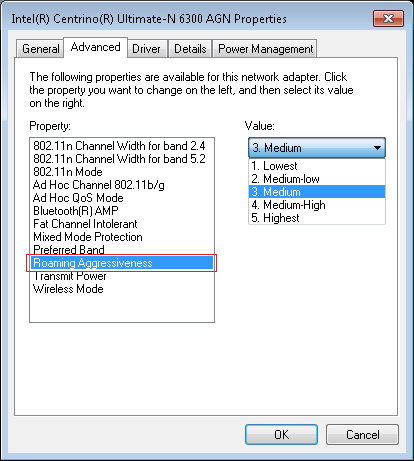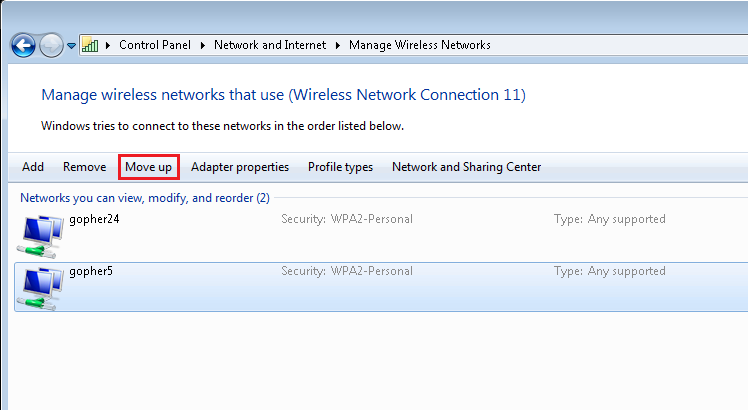|
|
Sub Categories
Command Prompt Type SummaryThe command prompt is a useful environment to perform tasks such as updating BIOSes, retrieving log files or performing other diagnostic routines. There are four main types of command prompt:
Before running any diagnostic utilities or BIOS updates, you need to find out which one of the four command prompt types is required. Basic Command IntroductionThe commands below will help you to navigate and perform tasks in these situations.
Note: Commands inside the command prompt are almost always not case sensitive, which means that they can be typed lower or uppercase or even a combination.
Applies to:
ProblemSome versions of the Crucial M4 Solid State Drive (SSD) may start to become unresponsive. The system may appear to hang or run very slowly, sometimes at regular one hour intervals.
CauseThe cause is a firmware problem which causes the drive to become unstable after 5184 hours of power-on operation. The drive may also sometimes not be detected by the system BIOS when the system is turned on. Even when the drive has been detected and appears to have recovered, the drive may experience performance or detection problems after every subsequent hour of use. The root cause is a problem with the drives SMART monitoring and management system which encounters a problem after 5184 hours of use. ResolutionInstall the latest drive firmware to correct this problem. The problem has been seen with Crucial M4 SSDs with firmware versions older than 0309. Firmware 0309 provided the first fix for the 5184 hours issue, however we recommend that any drive with firmware 070H or older should be considered for a firmware update, as this also resolves some problems with Windows 8. Firmware 070H was released on 04/02/2013. Additional InformationHow to Check the Number of Power On Hours Use the Stone Smart Gather tool, or use a utility such as CrystalDiskInfo Portable Edition.
The Raw Values column can be changed from Hex to Dec via the menu. Checking the Firmware Version before and After Firmware Update The firmware version is displayed in the Hardware IDs field in the Details tab of the device in Device Manager, as shown below. Before the upgrade:
After the upgrade:
Crucial M4 2.5 inch SSD Firmware Download Page http://www.crucial.com/usa/en/support-ssd The page shows both Windows applications for performing the update as well as an ISO download. The ISO download provides a bootable Linux update environment for use when there is no Windows operating system currently installed. Firmware Update Process 1. Ensure that the SSD drive is the first boot device. 2. Boot to Windows and login. 3. Download the firmware update to the machines local C drive. Do not attempt to run the update from a USB pen drive or from a network drive. 4. To update the firmware, RIGHT-CLICK the utility and then select "Run as administrator". 5. Accept the license agreement. 6. Click Continue. 7. The PC will now restart and load a DOS like "stub" or text mode screen, and proceed to update the firmware. 8. Boot into windows and check that the new firmware has been applied.
9. As always, test the system using PC Check or similar. There is no Crucial specific SSD diagnostic tool. Applies to:
Bootable Pen Drive There are many instances where a "DOS" or Windows 98SE bootable pen drive is required - for example, some BIOS updates or other low level updates can only be done in this way. (Stone is working to provide Windows update utilties wherever possible, but these arent always available yet). If you need to create a DOS or Windows 98SE (or FreeDOS) bootable equivalent, please see some links to third party sites below which host various solutions. Note: We are not responsible for the content of third party web sites
Rufus - http://rufus.akeo.ie/ HP USB Format Tool - Download here Windows 98 Boot files - here Applies to:
Problemif you attempt to either factory reset or refresh a machine with Windows 8, in some situations you may find that the options are missing, or you may be prompted for installation media. CauseThis is a software problem where the recovery storage area is marked as disabled. Normally, installation media should not be required to perform a factory reset or refresh as the files are stored in the recovery area of the hard drive. ResolutionIf the refresh and reset options are missing, you may be able to restore them by following these steps:
Windows Recovery Environment (RE) and system reset configuration Information: Windows RE status: Disabled
REGAENTC.EXE: Operation Successful
Applies to:
ProblemWhen you try to logon to computer on a domain, you may receive the following error "The trust relationship between this workstation and the primary domain failed"
CauseDomain computers set up secure communications by using a computer account in the domain. For this to work, the computer account is protected by a password which is usually changed by the domain computer every 30 days. If the computer account becomes out of sync - i.e. the password does not match for some reason - the domain computer will be unable to log onto the domain. The account can go out of sync for a number of reasons including:
ResolutionThere are several possible methods to rectify this problem. Quick Method The first step would be to try and to reset the secure connection. From the Domain Controller, open Powershell or Command Prompt as an Administrator and type in: Netdom reset ComputerClientName /Domain: DomainName Full Method If the quick method doesn't work, then you will need to remove the computer from the domain, reset the account within Active Directory (see above) and then re-join the computer back to the domain.
Applies to:
System Recovery PartitionStone PCs and Notebooks come with a built in recovery partition which can be used to recover Windows to the factory defaults. Please Note: This facility is only available if the recovery partition was not removed as part of a customers software deployment process. For example, a customer imaging process that removes all partitions will remove the ability to recover the system back to the factory state.
Recovery ProcessYou need to make sure any personal data is backed up to an external device before running the recovery, as using this procedure will erase all user data from the hard drive. Instructions:
Note: Ensure that all user data, such as documents, settings and favorites are backed up to an external device or location before using the recovery procedure.
ProblemOccasional problems with imaging tools and processes could lead to a system that will not boot after it has been reimaged. For example, differences in SATA controller, partition sizes or versions of imaging software could leave you with a system where the boot sector is not correct, or the boot configuration database (BCD) needs to be re-written. Typically systems with this problem will not boot the operating system but just display a flashing cursor on the screen after the BIOS POST has completed. Note: These instructions have been written for Windows 7 and do not apply to Windows XP.
InstructionsStage 1 - Boot from the Recovery CD Tip: If you cannot create a Windows 7 Recovery CD, then a bootable USB pen drive containing Windows PE will suffice.
Stage 2 - Set the Active Partition Stage 3 - Fix the Master Boot Record, Boot sector and Boot Configuration Database (BCD) Further InformationYou may be able to prevent this situatiuon when deploying an Operating System image by using an option in your disk imaging software to completely recreate the partition table and boot sector (effectively erasing the drive), for example by using the DISKPART CLEAN ALL command. Note that this may remove Virtual PC check or other pre-installed tools. Applies to:
ProblemYou may receive Windows Update Error 0x8024402F even if the system has been reimaged. ProductsAny desktop or laptop product running Microsoft Windows 7 or Windows 8. Root CauseThis is caused by a problem with the Microsoft .NET Framework 4 Client Profile. ResolutionUnninstall the Microsoft .NET Framework 4 Client Profile: 1. Start->Control Panel->Programs and Features 2. Locate the Microsoft .NET Framework 4 Client Profile 3. Right click and then select Uninstall / Change 4. Confirm that you want this component to be uninstalled. This may take a few minutes. 5. Restart the system. 6. When the system has reboot, re-run Windows Update and as normal. More Information: This has been documented on the Microsoft Technet here.
Applies to:
Scenario
How to Troubleshoot This ScenarioThere are numerous causes of this problem:
If you are working inside a managed IT environment (for example a large school, a college or a university), in many instances, if your PC does not contain your data or files, it is often advisable to request that your system is reimaged first. This eliminates problems cause by viruses, unclean shutdowns and often BIOS settings. If you need to troubleshoot the ready for the reboot please follow the process below. How to Get the Stop Code from the blue Screen The first stage is to get the Stop code which is momentarily reported by Windows before the system resets. This stop code, along with any text message, may help in the identification of the root cause.
3. Using the arrow keys on your keyboard highlight ‘Disable automatic restart on system failure’ and press Enter. The system will reboot and windows will begin to load, but this time when the problem occurs the STOP message will be displayed. For example:
Stop 0x0000007B Inaccessible Boot Device Usuall causes: - SATA Controller Mode Change the Serial ATA Controller mode type from AHCI to IDE, or IDE to AHCI in the system BIOS. This problem normally only occurs on a newly imaged system, or a system that has just had a BIOS update. BIOS updates can cause BIOS settings to be lost meaning that the Serial ATA Controller mode is set incorrectly. To change the SATA controller settings, carry out the following procedure:
- Unclean Shutdown - Disk Consistency Check Required The file system is damaged. This can normally be fixed by reimaging the system, or by booting from a Windows CD and initiating a file system consistency check (CHKDSK). IRQL_NOT_LESS_OR_EQUAL or PAGE_FAULT_IN_NONPAGED_AREA These messages are often caused by a driver update, or an additional device plugged into the system. Unplug any recently added devices, especially any USB to serial adapters. If this does not resolve the problem, try rolling back to the previous driver configuration:
If you have a stop code or blue screen error message which is not covered above, try these steps:
ProblemSome customers have reported that their NT310 Stone laptop may intermittently beep unexpectedly. When the problem occurs, the laptop will beep every few seconds until rebooted or it shuts down. CauseThere are several possible causes for this:
Resolution
How to Check the Age of the Video Driver(NT310 Only) Windows 7
Windows 8 / Windows 8.1
Where to Get Upgraded Drivers
Applies to:
ProblemInstalling Symantec Endpoint Encyption (SEE) on systems that have the Virtual PC Health Check installed may cause the system to stop booting. ProductsSymantec Endpoint Encryption and Windows 7 with Virtual PC Health Check IssueWhen you try and boot the system you will be presented with the "Press F3 for Virtual PC Check". During a normal boot, you would ignore this message and let it timeout. However with Symantec Endpoint Encryption installed after the message has timed-out, it will simply re-appear and the boot process will not continue. If you press F3 you will get a message that says "NF" and the system will not proceed any further. Root CauseInstalling Symantec Endpoint Encryption on a system that has the Virtual PC Health Check installed. Virtual PC Health Check uses boot code that doesnt work when the partition layout is changed by programs such as Symantec Endpoint Encryption. Resolution1. If you are deploying an Operating System image, use the option in your disk imaging software to remove Virtual PC Health check by deleting the entire contents of the hard drive (for example, use the DISKPART CLEAN command). 2. If you are not deploying an image, or if you are already at the point where the system cannot boot, you will need to use the recovery process below: Stage 1 - Boot from the Windows 7 DVD
Stage 2 - Start the Recovery Command Prompt
Stage 3 - Repair the Master Boot Record (MBR)
This will have now stopped Virtual PC Health Check from running as the Master Boot Record (MBR) will have been replaced. This should allow the system to complete booting while Symantec Endpoint Encryption is installed. Applies to:
ProblemSpecific models of Intel LAN controller found on some Haswell systems and some older driver versions may intermittently cause excessive network broadcast traffic whilst the system is in sleep mode. Affected products include:
This problem does not appear on Haswell systems using a Realtek LAN Controller. SymptomsThese include:
The symptoms are similar to those experienced when a network loop has been introduced, however the problems above cannot be resolved by turning on spanning tree protocol (STP). The network may appear to be suffering a denial of service attack. Root CauseThe root cause is a bug in the Intel i217-LM network driver, which can cause IPv6 multicast traffic to be sent when the system is in a sleep state. Driver package versions 18.x including 18.7.28.0 are affected by this issue. The actual driver dates are January 2014 and older, and include driver version 12.10.30.0. An example of the problematic driver is shown below.
Please Note: In addition to using and supplying only industry tested and digitally signed drivers, Stone computers thoroughly tests all systems as part of a product evaluation and development process. This issue has only been replicated in very isolated circumstances however the issue can cause significant disruption, hence its inclusion on the Stone Knowledgebase. The issue has been replicated on Windows 7 but may also occur using Windows 8.
ResolutionInstall driver package 19.0 or later. As of writing, driver package 19.1 is available. This contains the Intel i217-LM driver version 12.11.96.1 dated 14/3/2014. Up to date drivers can be downloaded from the Stone Driver Finder. Additional Download Links Additional WorkaroundIf you are affected by this issue but not able to update the driver, a workaround is to remove the binding to IPv6 on the network adapter. This will remove the facility to use IPv6 services. To do this:
A further alternative, for example if you need to maintain the use of IPv6 services and cannot upgrade the driver, is to disable the system's ability to go into sleep state. If you require assistance with this, please contact Stone support. Applies to:
ProblemHaswell systems based on Intel 8 Series / Haswell chipsets with a Realtek LAN Controller fitted may experience LAN connectivity issues after using out of date LAN driver software under Windows. These systems were shipped in 2014 and 2015. These include:
This problem does not appear on Haswell systems that only use an Intel LAN Controller. SymptomsThese include:
Root CauseThe root cause is an out of date Realtek LAN controller driver which mis-programmed the LAN PHY chip. This mis-programming will survive cold and warm boots. The Realtek LAN driver on an 8 Series chipset based system should be updated to a November 2013 or newer version using the Stone Driver Finder. If you have up to date drivers running on the machine and on any PXE boot or deployment system but are experiencing problems, then you are likely not affected by this issue. Please contact the Stone service desk for assistance for additional troubleshooting. An example of a driver that may cause this problem is shown below: Note: Unfortunately the original component manufacturer's driver disk may contain a problematic, out of date driver. Please ensure you obtain all of your system drivers from the Stone Driver Finder or Stone Support.
ResolutionStep 1: The driver must be upgraded to a newer version, by obtaining a newer version from the Stone Driver Finder. If you need network connectivity to do this, you should do Step 2 first to regain some connectivity, then update the driver, and then repeat Step 2. Step 2: The LAN PHY chip must be reset. To do this after having updated the driver, perform the following:
Note: If you do not complete Step 2 after updating the driver then the problem may re-occur as the LAN chip programming has not been cleared. The LAN chip is programmed by the driver; step 2 must be completed after updating the driver.
Additional Example Scenario - PXE Boot
Applies to:
ProblemOperating system deployment fails with the following error: "The Computer Restarted unexpectedly or encountered an unexpected error. Windows Installation cannot proceed. To install Windows, click "OK" to restart the computer, and then restart the installation." ResolutionOn the screen with the error message above try the following steps:
Applies to:
ProblemA common scenario is the need to give a cloned output to more than one monitor and/or projector at the same time. For example, you may have a monitor already connected but then need to connect a projector. One solution available on the market is the passive video splitter. A passive splitter has no power supply and no electronics. It is simply wired to duplicate the signals to two HDMI, DVI or VGA connectors. The use of passive video splitters, such as a passive VGA splitter (15-pin) can cause configuration and reliability issues with modern PC systems and therefore is not recommended.
Issue 1: Mismatched display settings Using a physical clone of a display prevents the PC from being configured to support the different output device's characteristics, such as resolution. This means that the output has to be configured to the lowest common denominator of the two in both the X and Y axis. For example: Monitor 1: 1366x768 Projector: 1280x1024 Common denominator: 1280x768 - this is not the ideal resolution for either device and will give a stretched, distorted or letter box display on one or more device. Solution: Use seperate physical output ports on your system. Windows will automatically adjust the output for the best possible display on a cloned setup. Or, using the seperate output ports, configure a spanned desktop. This will allow you to run each device in its native resolution, and will allow you to drag and drop application windows between the two screens. Issue 2: DDC Pins shorted - display not configured correctly; damage may occur Most interfaces (including VGA 15-pin, DVI, HDMI and Display Port) may use of a communications channel called DDC. This is a communication channel from the monitor or projector back to the PC. This carries configuration information such as PNP ID, native resolution etc. Shorting the DDC information together by physically connecting the two outputs from two devices together can damage the device and the PC host system. Solution: Use seperate physical display outputs from the PC will ensure DDC information correctly gets back to the host PC system. If you do use a passive splitter - and this cannot be recommended - ensure that the DDC pin from one of the outputs is disconnected (for example, VGA pin 12 from one of the output devices). Issue 3 - Manual Configuration required Because a passive physical splitter cannot handle DDC information for both devices correctly, Windows may not be automatically able to determine the correct output resolution. The user will need to manually configure the correct resolution every time the device is connected. If a second device is connected while the system is running, the user may need to manually adjust the resolution on the original device to bring the resolution down to an acceptable setting for the new device. Solution: Use seperate physical display outputs from the PC Other Issues Other issues related to the use of passive splitters include problems where projectors may not display a signal unless the PC is powered up first. This again relates to DDC handshaking. Use seperate physical display outputs. Please contact your account manager if you would like to discuss upgrade options to your system to support multiple outputs. A system that supports multiple outputs resolves the problems listed above as well as giving control over which output is the primary and which output is the secondary, in the case of a spanned desktop. Applies to:
We are aware of an issue where laptop or netbook systems using Intel Atom 26xx and 28xx processors and Intel wireless cards such as the 6235 may deliver less than expected wireless throughput. The wireless signal strength shows a good signal however the wireless performance may fluctuate, depending upon the wireless environment. We are pleased to be able to announce the availabilty of the pre-release 15.5.6.48 Windows 7 32bit driver which resolves this issue. Further release versions of this driver will be available on the Intel web site shortly. There is no 64-bit driver as these Atom platforms do not support 64-bit Windows. Recommendation: As with any wireless driver, please test this driver in your environment for suitable performance and interoperability. Ensure that you uninstall all previous Intel wireless drivers and reboot before installing this replacement driver, as some of the driver version numbers are not consistent.
The 15.5.6.48 driver supports the following Intel wireless card models:
Note: In any situation it is always advisable to disable the bluetooth radio to improve 2.4GHz wireless performance, unless bluetooth connectivity is required.
Applies to:
ProblemSome versions of the Smart Technologies Product Drivers can cause problems when a USB 3.0 controller is installed in the system. This has been verified on Windows 7 and the 2010 version of the Smart Technologies driver package. When you boot the system, the keboard and or mouse may be unresponsive until you remove them and then plug them back in. Removing the USB 3.0 controller monitor program does not resolve the problem. The problem has been seen on H61, B75, Q77 and H81 systems. CauseThe drivers themselves appear to cause system problems as they were not designed to be aware of USB 3.0 controllers. The issues are evident even if you are not using the USB 3.0 ports on the system. ResolutionEither seek updated drivers from Smart Technologies, or if you are not connecting the Smartboard / Smarttable to the problem system, just uninstall the Smart Technologies driver package from Control Panel. The rest of the Smart Technology software will continue to function without the driver package.
Note: This problem is also described in the article USB 3.0 Controller Driver Issues and Work Around Summary.
Applies to:
KMS Activation BIOS Key MissingOn rare occasions the BIOS information to support Windows 7 KMS activation may be missing from the system BIOS. To rectify this problem, update the BIOS with the file attached. You will need a Windows 98SE bootable pen drive. This BIOS issue does not apply to MAK activation. Instructions
Alternative Download LocationThis file is also available here. Applies to:
IssueWe have identified an enhancement to the software which ships with the N120 netbook to improve the wireless performance of the system when used in a domain networking environment, when the system is booted from cold with the AC power disconnected (in other words, turned on and running on battery).
Potential symptoms of the wireless network connection not being ready quick enough when the system boots include:
VerifyPlease verify that you are affected by this specific issue: For example, when logged on as local Administrator, can you connect to the wireless network? If you are having problems seeing the wireless network in the network list, or problems with your authentication/encryption, these issues need to be resolved first and again you will not benefit from the software enhancement offered in this article. Tip: If you use a RADIUS server to authenticate and connect to your wireless network please ensure that this is working properly first.
CauseThe N120 netbook is designed to maximise battery life when the AC power is disconnected. As a result, in some situations, the wireless subsystem may not become available quickly enough to give the user a smooth logon experience when connected to a domain environment. ResolutionsThere are four resolutions below, listed in order of effectiveness or the time required to make the change.
Resolution 1
Resolution 2Disable wireless adapter power saving features in the power plan. To do this, either chooce the High Performance Power plan, or modify the Balanced or Power Saver plans to adjust the wireless power saving settings.
Resolution 3
Hint: All resolutions can be used in conjunction with each other however this is not normally necessary.
Instructions for the Hotkey as a Service Enhancement (Resolution 3)Full instructions and notes are provided in the readme.txt file included in the package, however please see the brief installation and removal instructions below. Please Note: The Hotkey as a Service Enhancement also includes several registry changes to improve group policy reliability. These registry changes are NOT removed if you uninstall the Hotkey as a Service enhancement.
Installation
Removal When you install the software, the uninstaller is copied to one of the following locations:
Note: Please test that this enhancement resolves any symptoms you have before rolling out the enhancement. For example, please create a new user inside active directory, then boot the system from cold, running on battery, and attempt to logon using the new user account. We also recommend that you perform testing to make sure that there are no unforeseen side effects to the user experience before you deploy this software.
Limitations of Resolution 3
Software Version 0.07 Updated 6/6/14 to change the group policy registry settings to minimise logon delays. Resolution 4
Applies to:
ProblemThere is a software issue that customers may experience on the Stone N120 Netbook whilst running Windows 7 that may cause the following symptoms:
CauseThis problem is caused by an incorrect version of the Hotkey software. If the Windows 8 version of the Hotkey software is used in Windows 7, the wireless card may not function correctly. Resolution
Note: If you are having problems with the wireless system whilst logging onto a Windows / Active Directory domain, for example with group policies not being applied, or messages regarding servers not being available to authenticate usernames or passwords, please see the attached article for a solution.
Applies to:
Problem
CauseThe cause is an issue with the Hotkey on-screen display software. ResolutionMethod 1
Method 2 Windows 7
Windows 8 / Windows 8.1
Applies to:
The Hotkey UtilityThe Stone NT310 laptop, like most laptops, uses add-on software to bring extra functionality and features to Windows. Stone provides the Hotkey Utility which provides extra on-screen display information and additional Hotkey functionality. Problem
ResolutionAn updated version of the Hotkey Utility is now available. Use the steps below to update your software. Steps - Windows 7
Steps - Windows 8
Steps - Windows 8.1
Applies to:
ProblemYou are using Windows 10 on your Stonebook Pro or Stonebook Lite and the Airplane mode functionality is not working. You are unable to switch on or off Airplane mode. Additionally, Airplane mode may keep on switching between showing as connected or turned off, and your wireless network connection may not be reliably available. CauseIf you have downloaded the Windows 10 x64 Airplane mode driver from our Driver Finder before 24/8/16, you may have the wrong version installed. ResolutionPlease uninstall your existing Airplane mode software, download the updated version and install it. The new version can either be downloaded from the Driver Finder, or here.
Please Note: If you upgrade from Windows 8.x to Windows 10, you will also need to uninstall the old Airplane mode driver and install the specific Windows 10 version above.
Applies to:
IssuesThere are a number of issues regarding USB 3.0 controllers primarily with Windows 7. This article highlights some of the more common problems as well as work-arounds for them. A driver package tor the four most common groups of USB 3.0 controllers is available at the end of this article. Problem 1 - Intermittent Device Response with Third Party Applications Problem 2 - VMWare Player or VMWare Workstation USB Removable Device / Passthrough does not work Problem 3 - Intel USB 3.0 Controller Driver May not Install through WDS / MDT / CC4 / SCCM Problem 4 - Upgrade to Windows 8 will not proceed with the Manufacturer USB 3.0 driver Installed Please Note: These issues are not specific to Stone PCs or desktops but rather are related to the chipsets and drivers supplied from the chipset manufacturer.
USB 3.0 Controllers AffectedThe main controllers addresses by this article are:
Native support for most of these controllers is available from within Windows 8.1; the Windows 8 / Windows 8.1 in-box driver is not affected by the issues discussed in this article. Problem 1 - Intermittent Device Response with Third Party ApplicationsApplications which monitor the USB ports on a system may not work, or USB devices in the system may have intermittent issues Cause The USB 3.0 Controllers above install their own port monitoring application by default. This notifies you, for example, if you plug a USB 3.0 device into a USB 2.0 port. The monitoring application monitors all ports on the system including USB 2.0 ports and issues can be seen across all ports in the system. The conflict between the driver's port monitoring application and an add-application which is also probing the USB ports can cause either program to cease working, or the USB ports themselves may intermittently fail to respond or detect devices. Resolution
See also Problem 5 for a similar issue around Smart Technologies Smartboard or Smarttablet drivers. Problem 2 - VMWare Player or VMWare Workstation USB Removable Device / Passthrough does not workIn this situation VMWare products are not able to take control of the USB device and pass it through to the guest operating system. When you attempt to connect the device to the guest operating system, you get an error message that the device is in use on the host. Resolution 1 Ensure the VMWare USB Arbitration service is running in Computer Management > Services. Resolution 2 Use the same resolution as for Problem 1. Then once you have removed the USB monitoring program, you should be able to assign the USB device to the guest operating system. Note: This problem appears to be more prevalent on Intel 8/9 Series USB controllers than other models, and has been verified to exist on VMWare Player 6.0.3
Problem 3 - Intel USB 3.0 Controller Driver May not Install through WDS / MDT / CC4 / SCCMWhen you use the INF driver and deploy this through a driver package, the Intel 7 or 8/9 driver may not install properly. The "Intel(R) USB 3.0 Root Hub" is listed in device manager as an Unknown device, or with a yellow exclamation mark on it. Device Manager reports that the driver is not installed correctly. Cause The cause is a problem with the way the driver and driver ID is constructed. The device has an ID of USB3\ROOT_HUB30&VID_8086_PID_1E31 whilst the driver does not have an INF that matches closely enough for the deployment process such as WDS to use it. Resolution
Problem 4 - Upgrade to Windows 8 will not proceed with the Manufacturer USB 3.0 driver InstalledIf you attempt to upgrade to Windows 8 from Windows 7 the upgrade checker may report that the USB 3.0 controller driver is not compatible. Resolution
Problem 5 - Smart Technologies Table or Smart Technologies Smartboard drivers cause the system keyboard to be UnresponsiveSimilar to Problem 1, some versions of the Smart Technologies Product Drivers can cause problems when a USB 3.0 controller is installed in the system. This has been verified on Windows 7 and the 2010 version of the Smart Technologies driver package. When you boot the system, the keboard and or mouse may be unresponsive until you remove them and then plug them back in. Removing the USB 3.0 controller monitor program does not resolve the problem. The problem has been seen on H61, B75, Q77 and H81 systems. Cause The drivers themselves appear to cause system problems as they were not designed to be aware of USB 3.0 controllers. The issues are evident even if you are not using the USB 3.0 ports on the system. Resolution Either seek updated drivers from Smart Technologies, or if you are not connecting the Smartboard / Smarttable to the problem system, just uninstall the Smart Technologies driver package from Control Panel. The rest of the Smart Technology software will continue to function without the driver package.
Stone USB 3.0 Driver PackageA driver package is available that contains the most up to date Windows 7 USB 3.0 controller drivers for all six mentioned controllers as of 25/7/16. This package includes:
Windows 7 Drivers for x86 and x64 are included. Download here. Applies to:
Problem
CauseThe cause is VLC Media player trying to take advantage of some hardware features to improve the video decoding. Depending on the graphics adapter and driver, this may produce the undesirable results above. This issue appears to be more prevalent on NVIDIA graphics adapters with HDMI connected projectors. ResolutionGo into the VLC Media Player preferences, and under Video, untick the option for "Use Hardware YUV -> RGB conversions".
Applies to:
ProblemWhen you use UEFI mode on most systems, Windows will attempt to use GPT partitioning during installation. This gives features such as the ability to support boot drives larger than 2TB. When you use Legacy mode on UEFI systems, Windows will attempt to use the older MBR partitioning method during installation. The two methods are not compatible with one another. For example, you may encounter problems deploying Windows if your hard drive was partitioned using the MBR style, and you then attempt to reinstall Windows with the BIOS reconfigured into UEFI mode. Problem 1: Legacy (non-UEFI) BIOS with a GPT Partitioned disk: "Windows cannot be installed to this disk. The selected disk is of the GPT partition style".
Problem 2: UEFI BIOS with an MBR partitioned disk: "Windows cannot be installed to this disk. The selected disk has an MBR partition table. On EFI systems, Windows can only be installed to GPT disks." Problem 3: UEFI BIOS with a GPT partitioned disk - with a deployment method such as MDT that has not been configured to handle GPT partitioning - the task sequence or deployment fails. Example of Problem 3: If you receive a new Stone PC with Windows 10 and decide to downgrade to Windows 7, many legacy Windows 7 deployment methods will not be prepared for the GPT partitioning method present on the hard drive. The Windows 7 deployment may fail.
Problem 4: UEFI BIOS with a GPT partitioned disk, but you are trying to reinstall the system using boot media that has been prepared in MBR mode - perhaps an original CD, or a USB pen drive - and the system won't boot from the boot media. Work AroundsProblem 1: Legacy System with a GPT Hard Drive
Problem 2: UEFI System with an MBR Hard Drive
If you are moving to a UEFI system on an MBR partitioned hard drive, or if your deployment method only supports MBR and you are working on a UEFI system, some BIOSes have a UEFI-CSM mode setting which may help. CSM stands for compatibility support mode. In this mode, UEFI features are enabled, and things such as Secure Boot will still work. However with CSM, the BIOS will detect the boot partition on the bootable media and enable MBR support as required. In this way, it is still possible to use MBR partitioned disks and Windows installations after moving to UEFI mode.
Problem 3: UEFI System and GPT hard drive, with an MBR only deployment method
Problem 4: UEFI System with a GPT hard drive, but booting from MBR media
How to Delete The Partitioning Information
Note: These instructions will completely erase the contents of your systems hard drive. Please ensure that you backup all of your data first. This method will only allow for a clean installation of Windows.
Applies to:
Wireless Guide 1Use the guide below to assist you in troubleshooting signal problems such as low signal strength or low throughput performance on wireless networks. Low Signal StrengthConsider Your Expectations
Reduce the possibility of being Affected by Interference
Other Tips
Applies to:
|

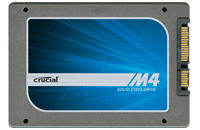
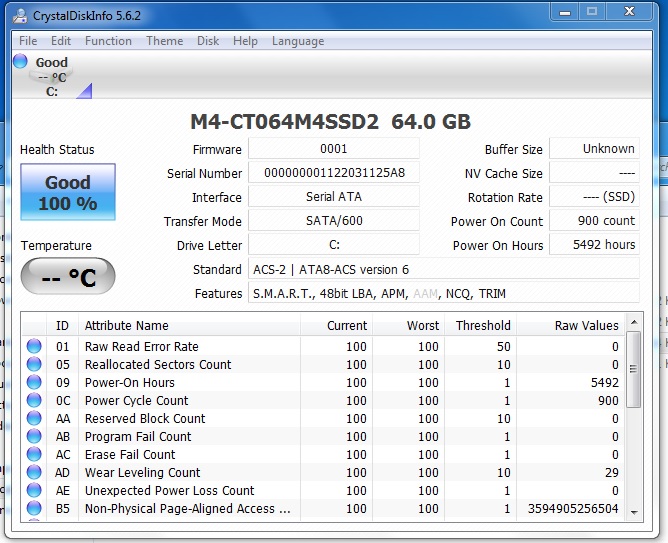
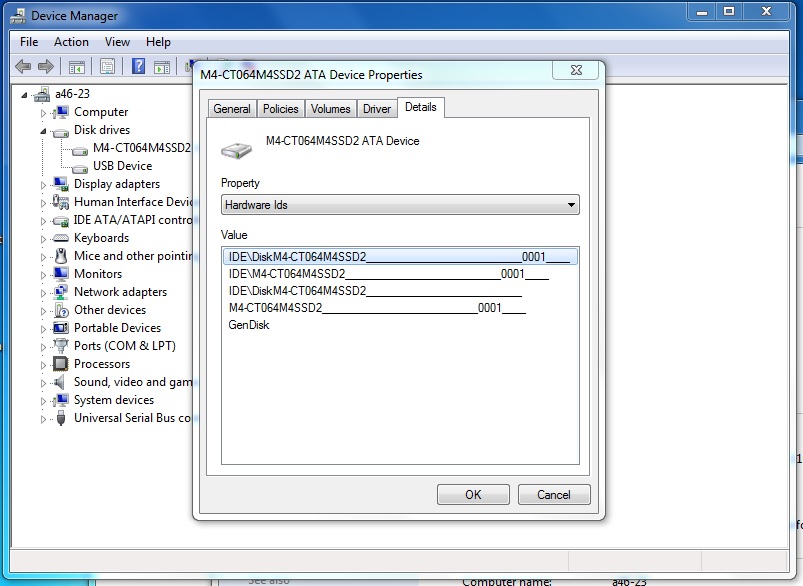
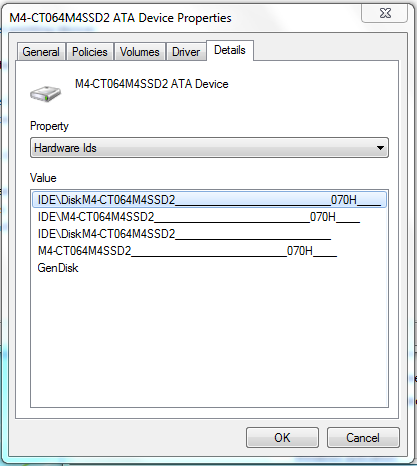
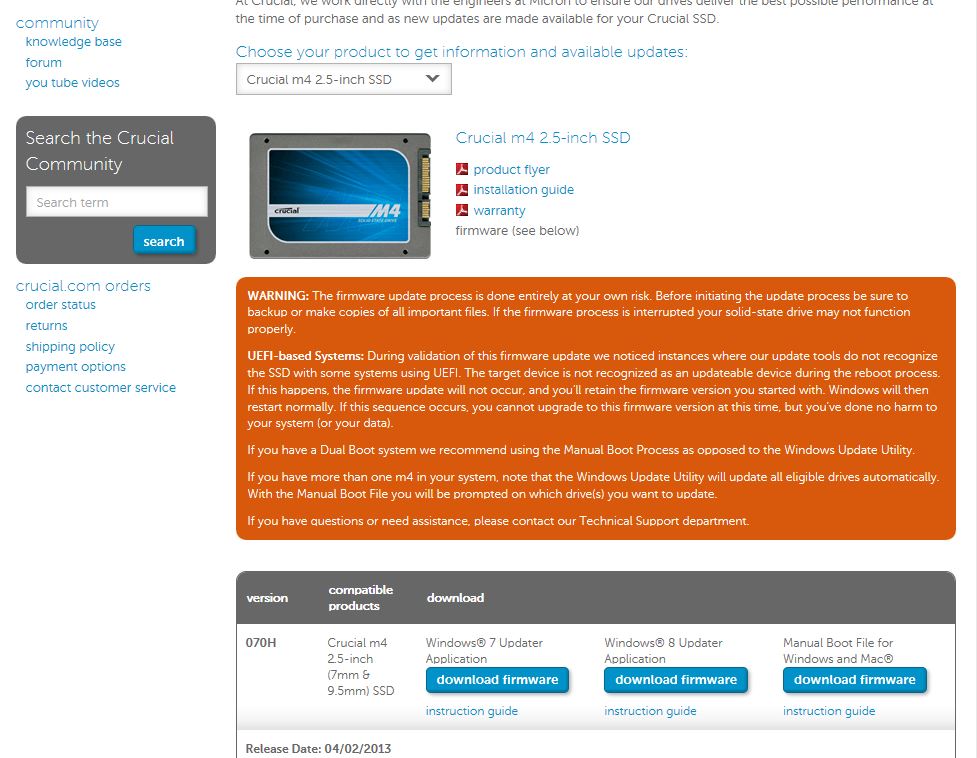
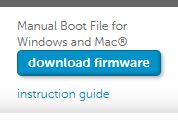
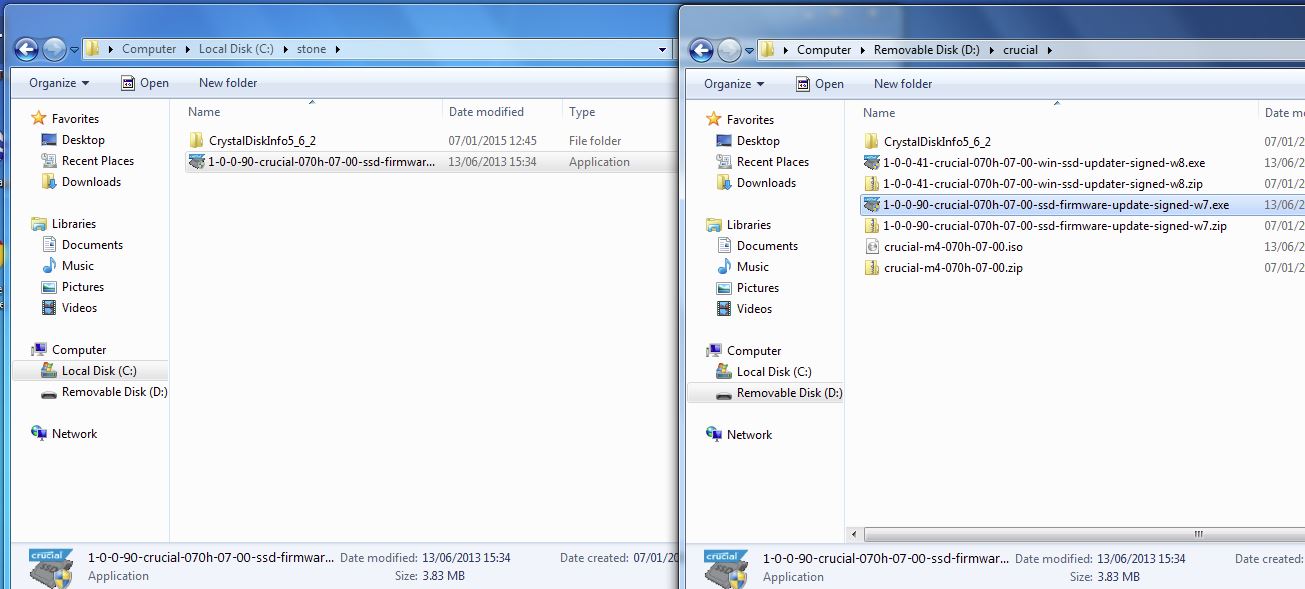

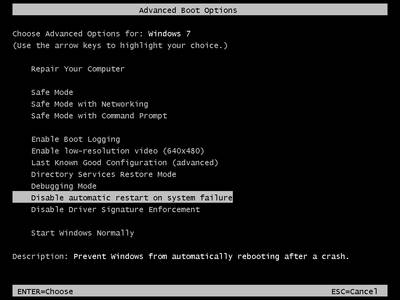
.jpg)
.png)
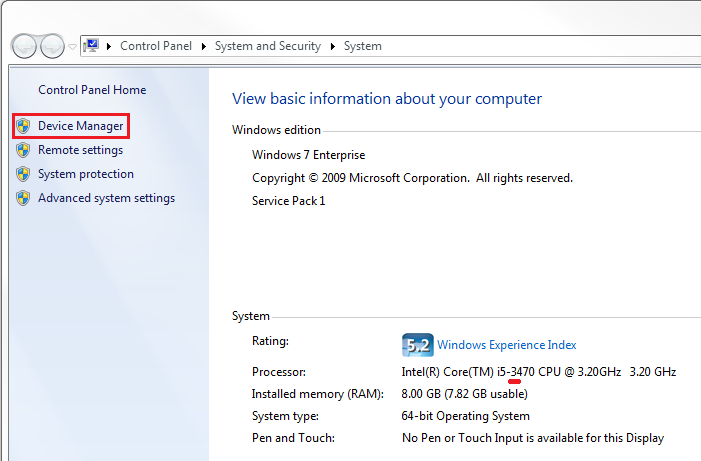
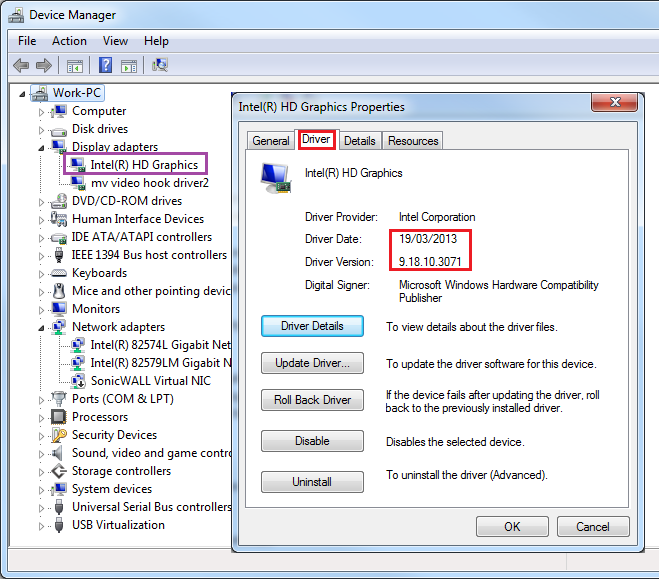
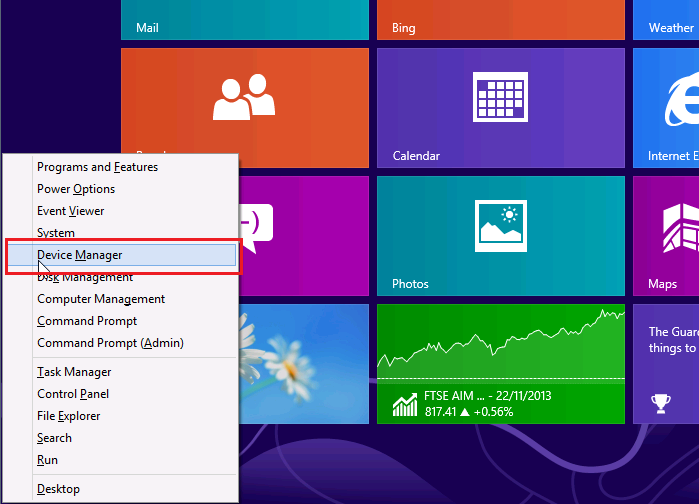
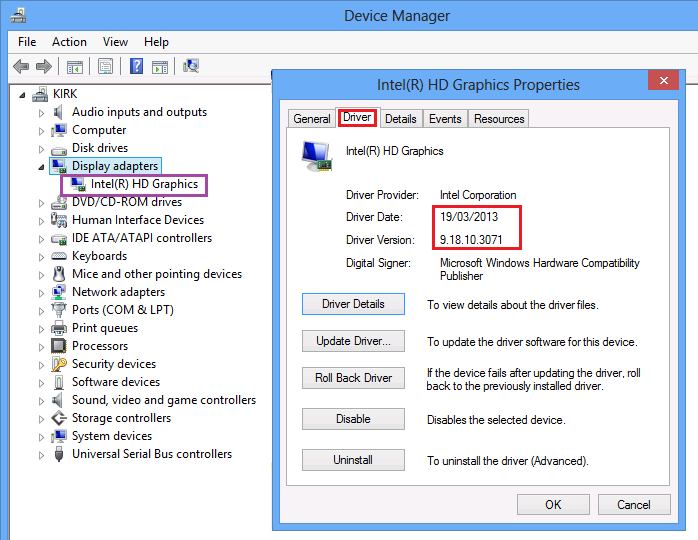
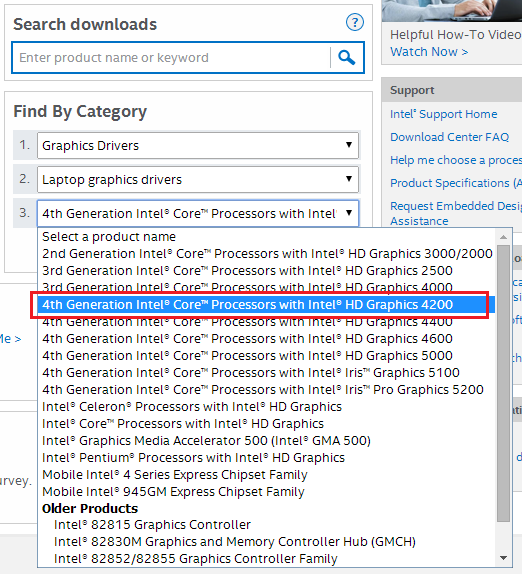
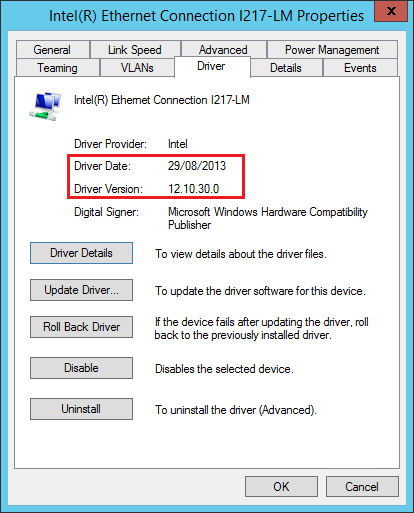

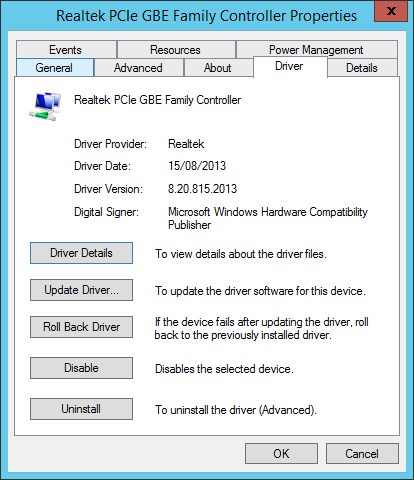
.PNG)

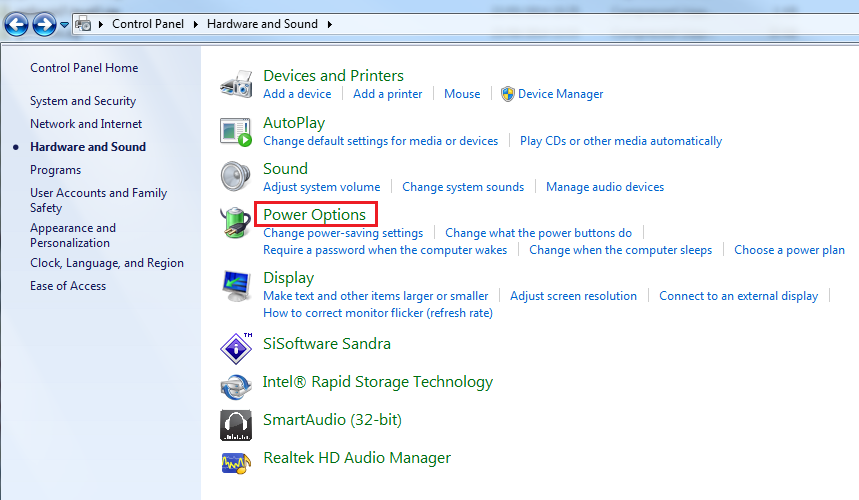
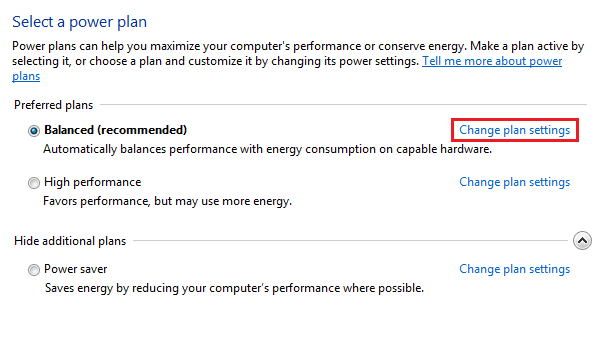
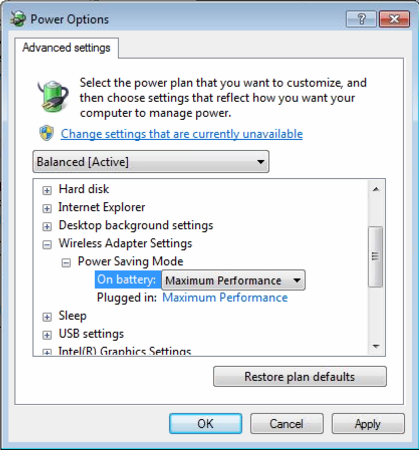
.png)
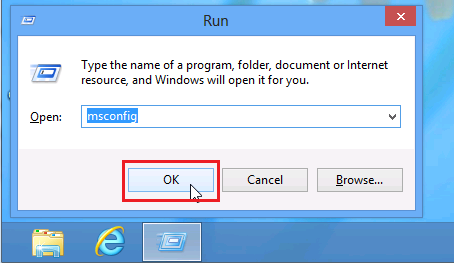
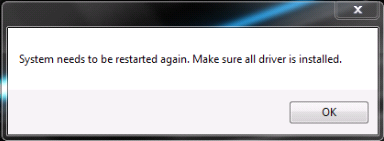

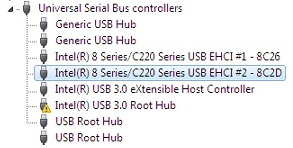
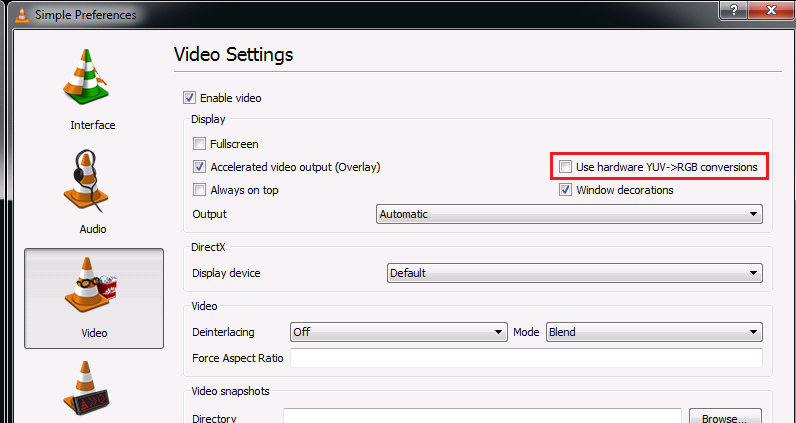
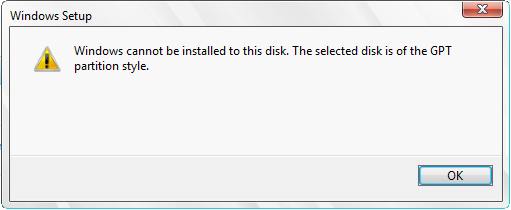
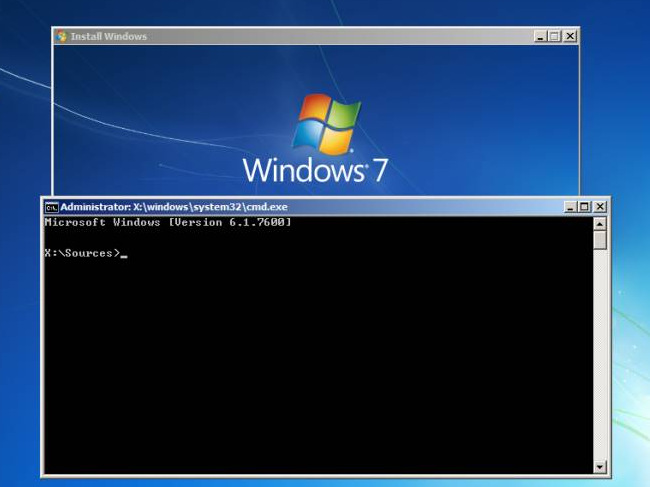
.PNG)
